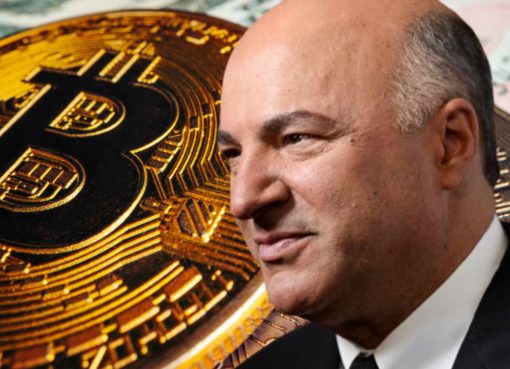- “All the Banks Are Broke,” and they’ve only got worse.
- Quantitative easing forever?
- The threat of cryptocurrencies will disrupt the financial sector.
A video from 2013 depicting a European minister’s tirade against the global banking system has recently re-emerged and gone viral. Gaining massive traction within the crypto community, the speech is now more relevant than ever — and central banks know it.
“All the Banks Are Broke”
Within an impassioned speech, British politician and former member of European Parliament (MEP) Godfrey Bloom thoroughly dismantles the global banking sector, proposing that banks are ‘broke” and highlighting what he calls institutional “incompetence and chicanery.”
Watch: Godfrey Bloom’s tirade against the financial sector
Packing in as much vitriol as one can within a two minutes, Bloom systematically tears the financial system apart.
Aiming at the sector’s penchant for fractional reserve banking, the former-MEP remarks that “banks lending money that they don’t actually have” is tantamount to a “criminal scandal.”
Financial institutions around the world have been operating fractional reserve systems for many years. The practice entails using the vast majority of customer deposits to generate profit via interest rates on loans. This results in a mere fraction of bank deposits (10% for larger institutions) remaining available for withdrawal.
Bloom also focused on the moral hazard within banking, alluding that the government’s promise to bail out banks—as they have done time and time again—encourages riskier behavior.
Most pertinent of all was Bloom’s take on quantitative easing (QE):
We have counterfeiting, sometimes called ‘quantitative easing,’ but counterfeiting by any other name—the artificial printing of money—which, if any ordinary person did, they’d go to prison for a very long time, and yet governments and central banks do it all the time.
Quantitative Easing Can’t Last Forever
In the decade since the financial crisis, the world’s central banks have combated rising interest rates by buying copious quantities of government debt—aka QE.
Watch: Trump calls for negative interest rates.
In 2019 following a dovish turn from the U.S. Federal Reserve, global economies started upping their fiscal policy games. Among the more unconventional monetary maneuvers was QE.
In 2019, the Fed’s repo operations offered a veneered return to QE. Meanwhile, the European Central Bank (ECB) didn’t even bother with the charade, announcing in September that it would start up QE once again, buying up bonds at a rate of €20 billion for “as long as necessary.”
While QE proved to quell the last financial crisis, “the artificial printing of money” — to quote Bloom — isn’t sustainable.
Worryingly, speaking before the Senate Banking Committee last week, Federal Reserve Chairman Jerome Powell commented that the Fed would use QE “aggressively” should another recession hit.
It is much more likely we will have to turn to the tools we used in the financial crisis […] I believe we will use them aggressively should the need arise to do so. There is no need to do that now but we will use those tools aggressively.
Watch: Jerome Powell tells lawmakers a return to Q.E. is on the cards
The problem is, many economists—as well as the World Economic Forum (WEF)—have noted that QE may not be as effective as it was last time. According to its 2019 annual Global Competitiveness Report, the WEF opines that unlike 2008, the next recession will leave central banks with “fewer policy options.”
The Banks Know Their Time Is up
The cryptocurrency industry—underlined by blockchain tech—is slowly reaching critical mass. Bitcoin adoption is on an exponential rise, while companies ranging from Amazon to Alibaba, are adopting blockchain. Now, central banks are starting to sweat.
To keep the threat of crypto at bay, many institutions accept that it’s time to overhaul the antiquated financial system via central bank digital currencies (CBDCs).
From the Bank of England-led research collective to the People’s Bank of China’s incipient CBDC, central banks all over the globe are hurrying to either implement a digital currency or actively research them.
The topic of CBDCs was even broached by Powell during a congressional hearing last week.
Every major central bank is currently taking a deep look,” Powell said, “We feel that’s our obligation, technology has now made that possible. I think it’s very much incumbent on us and other central banks to understand the costs and benefits and tradeoffs associated with a possible digital currency.
The pressure to compete with China, combined with private sector initiatives such as bitcoin and Facebook’s Libra, it’s do or die time for the U.S. and Wall Street.
Disclaimer: The opinions expressed in this article do not necessarily reflect the views of CCN.com.
This article was edited by Sam Bourgi.
Last modified: February 20, 2020 3:46 PM UTC




